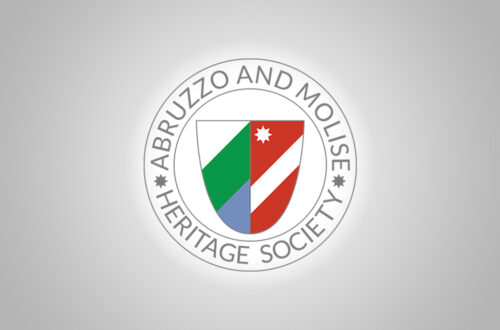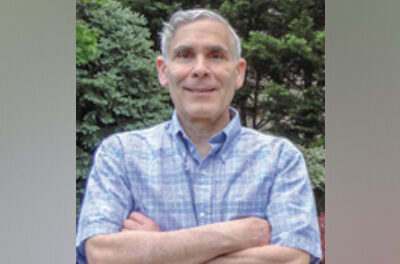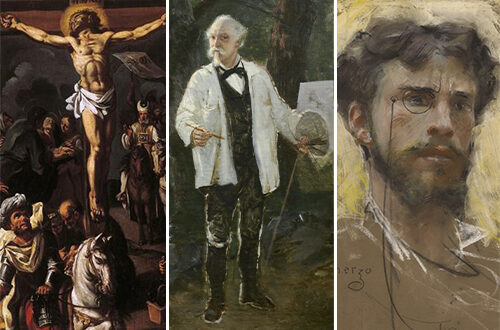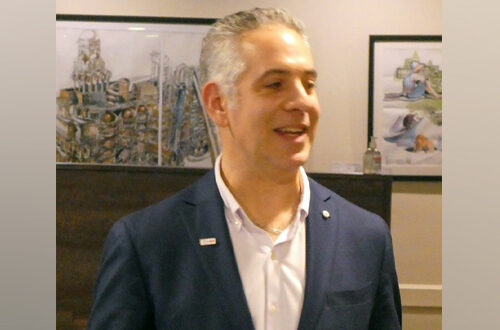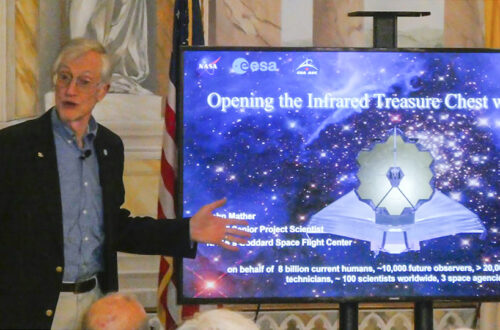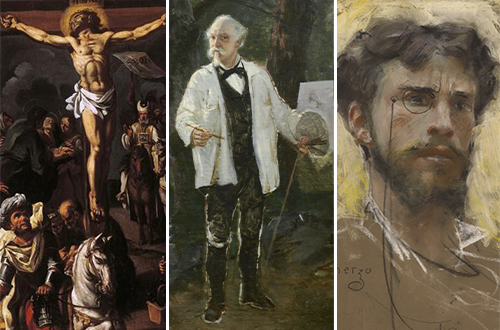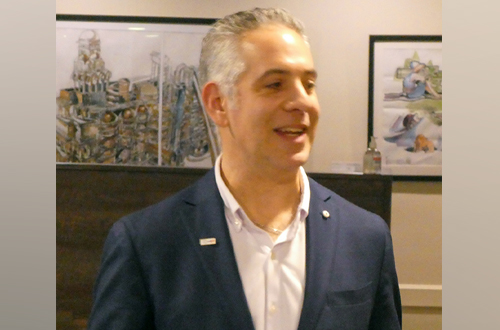-
Nobel Laureate Describes Exciting Work on James Webb Space Telescope
By Nancy DeSanti, 1st Vice President-Programs
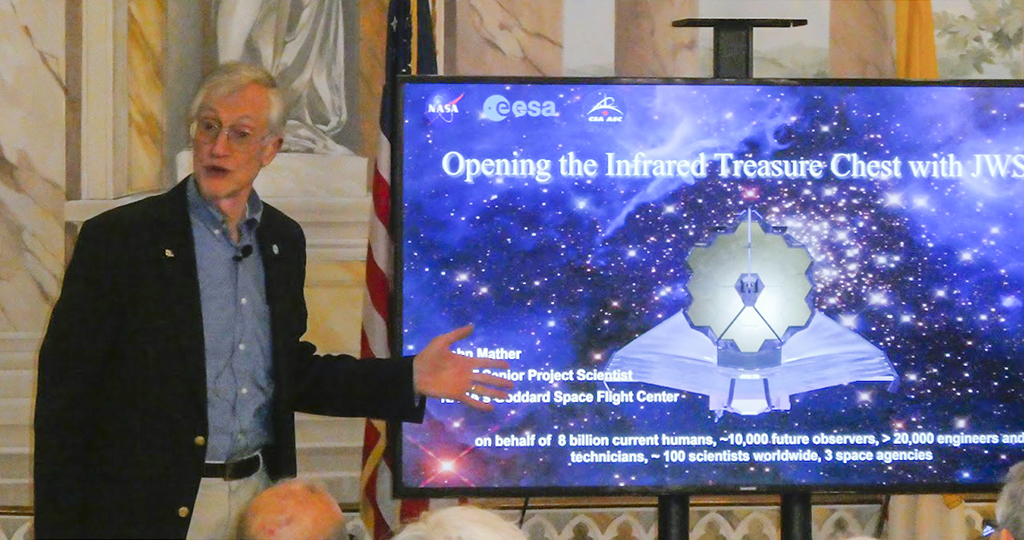
Dr. John Mather gave a fascinating talk on the James Webb Space Telescope. The lights are low at Casa Italian so that the audience could better appreciate the amazing images.
Credit: Sam YothersOn January 29, 2023, Casa Italiana was the site of a talk by a Nobel Prize winner explaining the most exciting scientific research into the universe now taking place. Dr. John C. Mather spoke to an appreciative audience about his work as the senior project scientist for the James Webb Space Telescope (JWST), the most powerful space telescope ever built. The decades-long project has involved the work of 20,000 scientists, engineers, and computer programmers.
The AMHS program was co-sponsored by the Casa Italiana Sociocultural Center, and Dr. Mather’s talk was arranged by AMHS member Joe Novello, who was formerly a colleague of Dr. Mather at NASA.
Dr. Mather is a senior astrophysicist at the NASA Goddard Space Flight Center in Maryland and adjunct professor of physics at the University of Maryland’s College of Computer, Mathematical, and Natural Sciences. In 2007, Time magazine listed him among the “100 Most Influential People in The World.”
Dr. Mather is an astrophysicist, cosmologist and winner of the Nobel Prize in Physics in 2006 for his work on the Cosmic Background Explorer Satellite (COBE) with George Smoot. That work helped cement the Big Bang theory of the universe. He is also the senior project scientist for the James Webb Space Telescope, launched on December 25, 2021. Dr. Mather showed us some of its stunning images from deep space that are bringing us closer to a new understanding of worlds outside our solar system.
Recently, when the JWST captured a unique perspective of the universe, including never-before-seen galaxies described as glittering like diamonds in the cosmos, one research astronomer commented, “the stunning image quality of Webb is truly out of this world.”
The Nobel laureate called the James Webb Space Telescope “the most important work of my life.” The project will study the evolution of planetary systems and the ways they could support life. JWST is expected to observe galaxies at all stages of development, so that the result will be a complete picture of galaxy assembly from the epoch of first light through the present. As Dr. Mather aptly noted, “astronomers travel at the speed of imagination.”
As to whether he was nervous about the launch, he said, “No, not at all. We had a checklist of 700 items which we went over and over carefully. And it worked perfectly!” He said the JWST will be good for 20 years, until it runs out of rocket fuel.
He said he does not know if we are alone but “any neighbor” would be “pretty far away.” The scientists have not found out yet if there’s “another earth,” but “we’re trying.”
Some of our members may recall that Dr. Mather gave us a talk in March 2014 and described what it was like to receive the phone call that changed his life when he learned he was to be awarded the Nobel Prize at a ceremony in Sweden attended by the Swedish king.
Dr. Mather also recalled that when he was eight years old, he received a biography of Galileo from his parents, and from that time on, Galileo became one of his heroes. He told us that Italy is one of his favorite places to visit, and he noted that there is a town in Italy that sends flowers to the Nobel Prize ceremony every December. This is the Ligurian town of San Remo, where Alfred Nobel spent the last five years of his life.
Dr. Mather noted that NASA led the design and development, and partnered with the European Space Agency, of which Italy is an active member. For example, Samantha Cristoforetti, affectionately known as Astro Sam, is well known as the famous Italian woman astronaut who has commanded the International Space Station and who hopes to be the first European on the moon.
Asked what’s next, Dr. Mather said that the Nancy Grace Roman Space Telescope is scheduled to launch in 2027, and then the Habitable Exoplanet Observer is estimated to launch in 2035. After his talk, he chatted with audience members while he signed posters, posed for photos, and inscribed copies of his book, “The Very First Light: The True Inside Story of the Scientific Journey Back to the Dawn of the Universe.” Before leaving, Dr. Mather commented that he “really felt at home.”
The delicious lunch was catered by Fontina Grille. Many thanks to those who helped with the luncheon program, especially Frank Bonsiero, Mark Lino, Lynn Sorbara, Peter Bell, and Julie Finigan Dal Forno. And thanks also to those who donated prizes and bought tickets for the raffle.
March/April 2023
-
A Message from the President
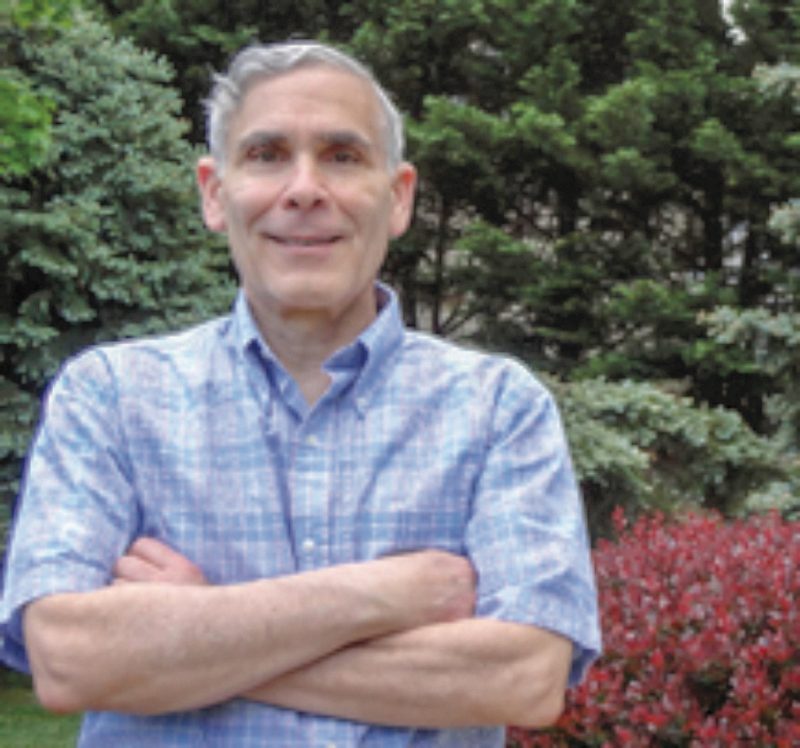
Dear members and friends:
I hope that this message finds you in good health.
I hope too that you have been able to take advantage of one or more of the programs that we have offered our membership since my last message to you. On January 29th, we held our first general meeting of 2023. Our guest speaker was Dr. John Mather, the Senior Project Scientist for the James Webb Telescope, and a Senior Astrophysicist in the Observational Cosmology Laboratory at NASA’s Goddard Space Flight Center. His talk generated many comments and questions and attracted an excellent turnout that included both members and non-members. Fontina Grille provided its usual fine catering, and so the good food and the thoughtful exchanges combined for a successful start to our programs for the new year.
Just one week later, on February 5th, the AMHS organized an outing to a lecture by Dr. Eric Denker at the National Gallery of Art. Following the lecture, Dr. Denker gave our group an overview of the exhibition “Vittore Carpaccio: Master Storyteller of Renaissance Venice”, after which they headed over to lunch at the museum cafe.
On February 12th, some of our AMHS members and friends attended a luncheon at Il Canale in Georgetown, where Chad Sarchio, immediate past president of the D.C. bar association, discussed the trajectory of his legal career and his Italian American heritage. Mr. Sarchio is a very good speaker and, not surprisingly, the event was interesting and entertaining.
Looking ahead, our second general meeting will take place on March 26th at Casa Italiana. The guest speaker will be Daniel Piazza, the Chief Curator of the Smithsonian National Postal Museum. Additional details regarding his talk are contained in an article in this edition.
The AMHS Executive Committee has formed a brainstorming group to evaluate how our society is doing. Many organizations periodically engage in such assessments to ensure that they are following their charter or objectives and providing the most value to their members. The group, which consists of both AMHS members who are on the EC as well as AMHS members who are not, will attempt to assess what it is that we are doing well versus those things that we could be doing better. Such careful self-analysis is vital to the ability of organizations to anticipate the future and not merely react to it. The group plans to reach out to the general membership to be sure that members’ views are considered.
I would like to thank all those members and friends who have donated to our scholarship fundraising campaign. As of late January, we raised over $7500 — an amount close to the $8000 needed to fund our two scholarships for 2023. Your continuing generosity makes our scholarship program possible, as we do not receive any financial assistance from outside organizations. It is not too late to contribute, so if you would like to help push us over the $8000 mark, go to our website, click on the Scholarships tab, and then select “Donate to Scholarships”. It is easy, and the impact is truly meaningful, both in the lives of outstanding Italian-American students and in our ability to carry out our mission of preserving our Italian-American heritage and passing it on to future generations.
Thank you for reading and enjoy the springtime!
Best regards,
Ray LaVerghettaMarch/April 2023
-
More Notable Artists from Abruzzo and Molise
By Joseph “Sonny” Scafetta, Jr.
(Editor’s Note: Continuing with our series on the many individuals from Abruzzo and Molise who have made a mark on the world, we feature three more painters from our regions.)
Paolo Gamba
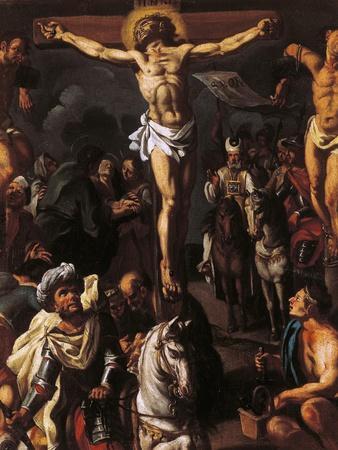
Paolo Gamba’s Crucifixion, one of 14 painting depicting the Stations of the Cross (1741).
Credit: AllPosters.comPaolo Gamba was born in the community of Ripabottoni (population 4,425 in the First Census of 1861; 644 in the 2004 Census) in the province of Campobasso in what is now the region of Molise on October 29, 1712. His father was a decorative painter of the Mannerist School. When he was 19, Paolo met with the Bishop of Larino who gave him a recommendation so that he could study under Francesco Solimena (1657-1747) in Naples.
After his apprenticeship ended, Gamba returned to Molise to paint sacred subjects in the Baroque style. Starting in 1738 at age 26, he painted for the parish church in Montorio nei Frentani. Next, he painted The Offering of Melchisedech for the Church of Santa Maria Assunta in Fossalto. However, his first documented works are a series of frescoes done in 1740 in the sacristy and the church of the convent of the Cappuccini in Sant’Elia a Pianisi which adjoins Ripabottoni. In 1741 at age 29, he painted his most renowned works: 14 canvases depicting the Way of the Cross in the Monastery of Sant’Alfonso in nearby Colletorto. One of the 14 canvases is shown here. They are noted for their strong dramatic showing of the passion and death of Christ. He next painted Madonna del Purgatorio for the Church of San Giovanni Battista, also in Colletorto. In 1747, he painted frescoes for the cupola of the Church of San Francesco in Larino.
Over the course of the next 24 years, he painted in various local churches. For the Church of Santa Maria Assunta in Ripabottoni, he painted canvases depicting Madonna of the Purgatory, Madonna of the Rosary of Saint Roch, and The Presentation of the Virgin at the Temple. While there, he also painted frescoes including Virtue and Prophets in medallions. For the Church of Maria della Concezione, also in Ripabottoni, he painted the Immaculate Conception, Assumption of the Virgin, and The Annunciation, as well as medallions with stories of the New Testament.
In 1771 at age 59, he painted in the Church of San Francesco in Agnone. In early 1774, he returned to the Church of Santa Maria Assunta in Fossalto to paint frescoes in the presbytery depicting The Sacrifice of Isaac, Transport of the Holy Ark, and Cain and Abel. Later that year, he painted The Immaculate Conception Surrounded by the Evangelists in the apse of the Church of San Martino in Campodipietra. His last work was done in 1779 in Matrice where, for the Church of Sant’Antonio, he painted altar pieces depicting Madonna del Carmelo and Birth of the Virgin.
Gamba died in his home in Ripabottoni on December 26, 1782, at age 70. Being deeply religious, he believed that vanity is a sin, so he did not paint a self-portrait. He never married.
Sources:
Giuseppe Palizzi
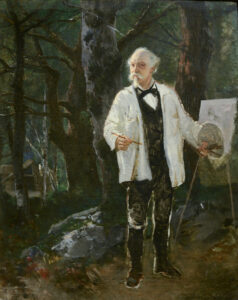
Giuseppe Palizzi’s Self Portrait in Fontainebleau (1870).
Credit: WikipediaGiuseppe Palizzi was born on March 19, 1812, in the town of Lanciano in the province of Chieti in the region of Abruzzo. He was named Giuseppe by his parents because he was born on the feast day of San Giuseppe. When he was three years old, his parents moved their family to Vasto which was a larger city on the coast of the Adriatic Sea. Here along the seacoast, he began to show his artistic abilities from a very early age.
After he turned 23 years old in 1835, he moved to Naples and enrolled at the Royal Institute of Fine Arts where he encountered the painters of the Posillipo School. There he presented historical landscapes at the yearly shows of the Institute. However, being intolerant of rules and expected mannerisms, after nine years in Naples, the 32-year-old Giuseppe pulled up roots and relocated to Paris in 1844. After a short period of surveying the land, he decided to move to the village of Bourron-Marlotte which was located on the edge of the forest of Fontainebleau outside of the city. This forest became the primary subject of his painting which developed in the direction of painstaking realism through the influence of the Barbizon School.
Giuseppe kept in communication by letter with his younger brother Filippo who had stayed back in Vasto. In his letters, Giuseppe shared with Filippo the results of his artistic explorations. For ten years, Giuseppe exhibited regularly at the Paris Salon. In 1854, he made a short trip to Naples to visit his friends there, followed by a short stay in Vasto to visit family members and to sketch local pastoral scenes outside of the city.
Before the year was up, he returned to Paris where he achieved great success with pastoral landscapes inspired by his stay in Vasto. His paintings from this period of his life often included figures of humble laborers. In 1859, he was made a member of the Legion of Honor by the French Government. Three years later in 1862, he traveled to Rome to receive the Cross of the Knights of Saint Maurice and Saint Lazarus from the new Italian Government.
Upon his return to the Paris suburbs bordering the forest of Fontainebleau, he immersed himself in his work and dedicated himself to painting directly from nature. He also undertook intensive activities with various artistic organizations in the French capital. While doing so, he met the main artists and intellectuals of the period. He was further intrigued by the newfangled art of photography and its ability to capture precisely the images of the operator.
Towards the end of his career, he befriended many painters of the impressionistic circle, but he declined to adopt their new style of painting, which he considered “imprecise” in one of his last letters to his brother. As a lifelong bachelor, Giuseppe died in Paris on January 14, 1888, about two months shy of his 76th birthday. His surviving paintings remain in the principal European art galleries and in private collections.
Sources:
- Vasto Domani at page 5, October, 1988.
- https://vastesiworld.org/listing/palizzi-giuseppe, accessed September 25, 2020
- https://en.wikipedia.org/wiki/Giuseppe_Palizzi, accessed September 26, 2020
Francesco Paolo Michetti
Francesco Paolo Michetti was born in the community of Tocco da Casauria (population 2,662 in the 2017 Census) in the province of Pescara in the region of Abruzzo, on October 2, 1851. After his father died when he was a boy, his mother sent him to work for a local fresco painter. In 1868 when he was not yet 17, he was awarded a stipend by his province to study at the Accademia (now Istituto) in Naples where he was influenced by artists of the School of Resina.
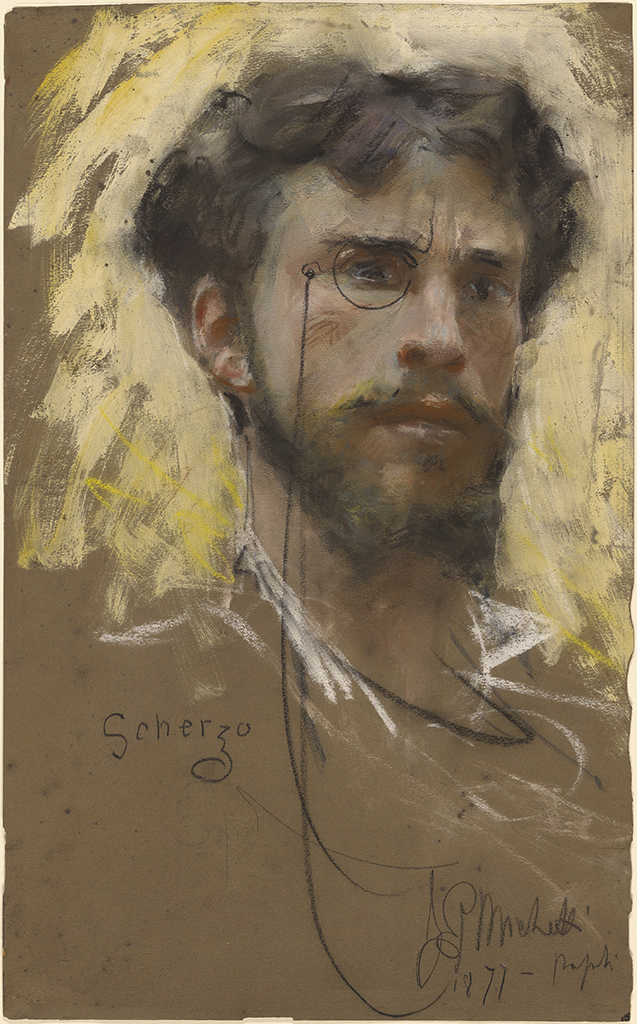
Francesco Paolo Michetti’s Self Portrait (1877).
Credit: getty.eduAfter a year, disciplinary problems caused the head of the Accademia to send him home where it was believed that his temperament would benefit more from real life situations. Nevertheless, he was allowed to continue to receive his stipend. Abruzzo was his emotional and aesthetic inspiration. He captured its people, animals, and local events, like religious processions, in paintings with luminous colors and vibrant light. When his stipend ran out in 1871, he moved to Paris where he exhibited Dream of Innocence and The Pumpkin Harvest in the Salon of 1872. He also exhibited at the Salons in 1875 and 1876. In 1877, with his Corpus Christi Procession, a highly colorful depiction of a festival, he became recognized as one of the best exhibitors. In that same year, he also painted his self-portrait showing himself at age 26. During the next year, he exhibited Springtime and Love, a depiction of families enjoying a hilltop above a village with a broad view of the Adriatic Sea and the sky. At the National Exposition in Torino in 1880, he exhibited Palm Sunday. At the Exhibition in Milano in 1881, he was the most prolific exhibitor with 34 paintings, mostly studies of faces, full of sentiment, and seascapes, full of windblown sails.
In 1883, he purchased the Santa Maria di Gesu’ Convent in Francavilla al Mare, an Adriatic resort in the province of Chieti, as his home and studio. He then married a local girl and had three children, Elvira, Giorgio and Liberato. For the next 17 years, his “conventino” was a meeting place for Abruzzese artists and exponents of culture, including Gabriele D’Annunzio. Michetti’s painting Daughter of Iorio, completed in 1895, soon inspired D’Annunzio to write a tragedy with the same name. In 1896, Michetti was named a member of the Accademia Pontaniana in Naples.
After a 19-year gap, he exhibited many of his most recent paintings again at the Universal Exposition in Paris in 1900. However, a lukewarm response to his new work enraged him so much that he abandoned painting and closed his studio. He generally lived the rest of his life as a recluse.
Nevertheless, he received belated recognition. In 1903, he was admitted into the Roman Academy of Saint Luke. In June 1909, he was nominated to be an Italian senator, but declined the nomination. In 1911, he was named honorary president of the regional committee for the Pescara Exposition. In 1913, he was named to the Commission of the National Gallery of Modern Art in Rome. His salary from the National Gallery allowed him to live modestly and to have an influence on new artists. He died from pneumonia in Francavilla al Mare on March 5, 1929, at the age of 77.
Sources, all accessed May 30, 2021:
- https://en.wikipedia.org/wiki/Francesco_Paolo_Michetti
- https://www.getty.edu/art/collection/artists/3317/francesco-paolo-michetti
- https://en.wikipedia.org/wiki/Tocco_da_Casauria
- https://en.wikipedia.org/wiki/Francavilla_al_Mare
March/April 2023
-
Former D.C. Bar President Speaks About His Legal Career, Upbringing
By Joseph Scafetta, Jr. & Nancy DeSanti
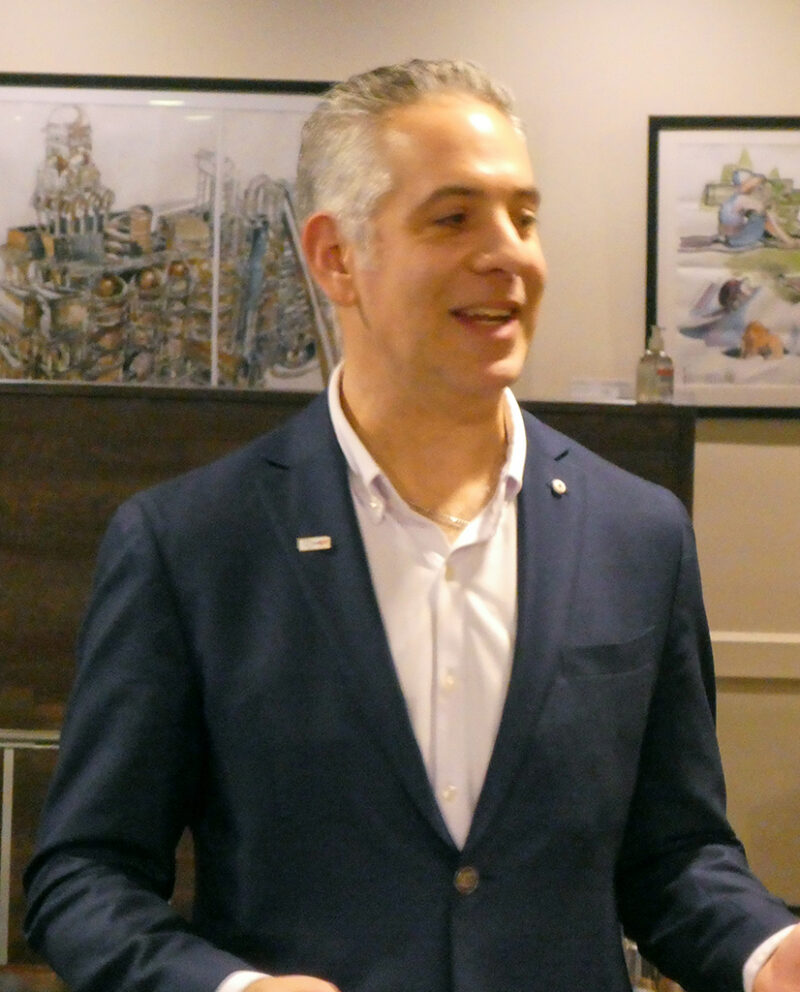
Chad T. Sarchio.
Credit: Maria D’Andrea-YothersChad T. Sarchio, the immediate past president of the D.C. Bar, spoke to an appreciative group of AMHS members and guests on February 12, 2023, at Il Canale restaurant in Georgetown, describing his legal career and his Italian-American upbringing.
Following a delicious lunch, Chad spoke to about 25 attendees on how his own values were shaped by his family’s emphasis on public service, given that his parents were both teachers and one of his grandfathers served in the military during World War II near Anzio.
He told us about growing up in northern New Jersey where there were many more Italian Americans than in the Washington, D.C. area. He noted that his family on his mother’s side was originally from a town near Milan, while his father’s side was originally from Sicily.
Since the luncheon took place on President Abraham Lincoln’s birthday, Chad opened with some remarks about our 16th president and his relationship with his family. Speaking about his own family and upbringing, Chad noted that he won a Reserved Officers Training Corps scholarship to attend Duke University, then earned his law degree in 1995 from George Washington University Law School so he could honor his ROTC service commitment as a military lawyer.
At the beginning of his legal career, Chad served as an active duty member of the U.S. Army Judge Advocate General’s (JAG) Corps, and he served in the JAG Reserves from 2000 to 2019. During his active service he deployed to Bosnia, where he said he quickly learned that translators and interpreters were critical to the success of his mission in gaining trust and connecting with members of the local population. He next briefly touched on his work as a military judge for three years before retiring from the military.
At GW Law, Chad is a Professorial Lecturer in Law where, since 1999, he has taught courses primarily on trial advocacy and pretrial practice. He has also taught trial advocacy as an adjunct professor of criminal law at the Army’s JAG School and at the Justice Department’s National Advocacy Center.
Sarchio now works as senior counsel for intelligence law at the Drug Enforcement Administration. Previously, he served as a federal prosecutor with the U.S. Attorney’s Office in the District of Columbia.
Chad served as president of the D.C. Bar from July, 2021, through June, 2022. He was only the third Italian American and the second government attorney to be elected to the position in the 50-year history of the D.C. Bar. He noted that, during his term, as the country faced the extraordinary challenges of the Covid-19 pandemic, he focused on mitigating a local eviction crisis and the need for more pro bono work and charitable giving. He tried to balance those priorities by advocating for more programs and services that would tend to the well-being of attorneys.
He concluded by discussing his hobby of restoring classic cars, starting with a 1966 Ford Mustang and now working on a 1972 Toyota Land Cruiser. After his talk, Chad kindly stayed to answer questions and chat with attendees.
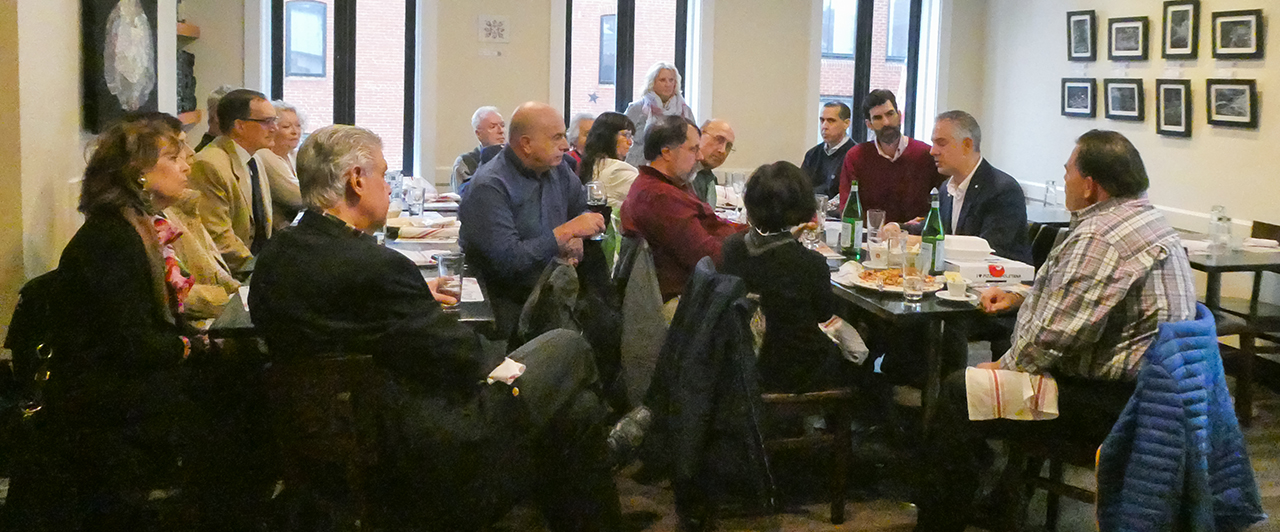
AMHS members and friends listen to Chad Sarchio’s talk at Il Canale.
Credit: Maria D’Anrea-YothersMarch/April 2023
-
Pettorano sul Gizio

By Nancy DeSanti
Province of L’Aquila, Region of Abruzzo
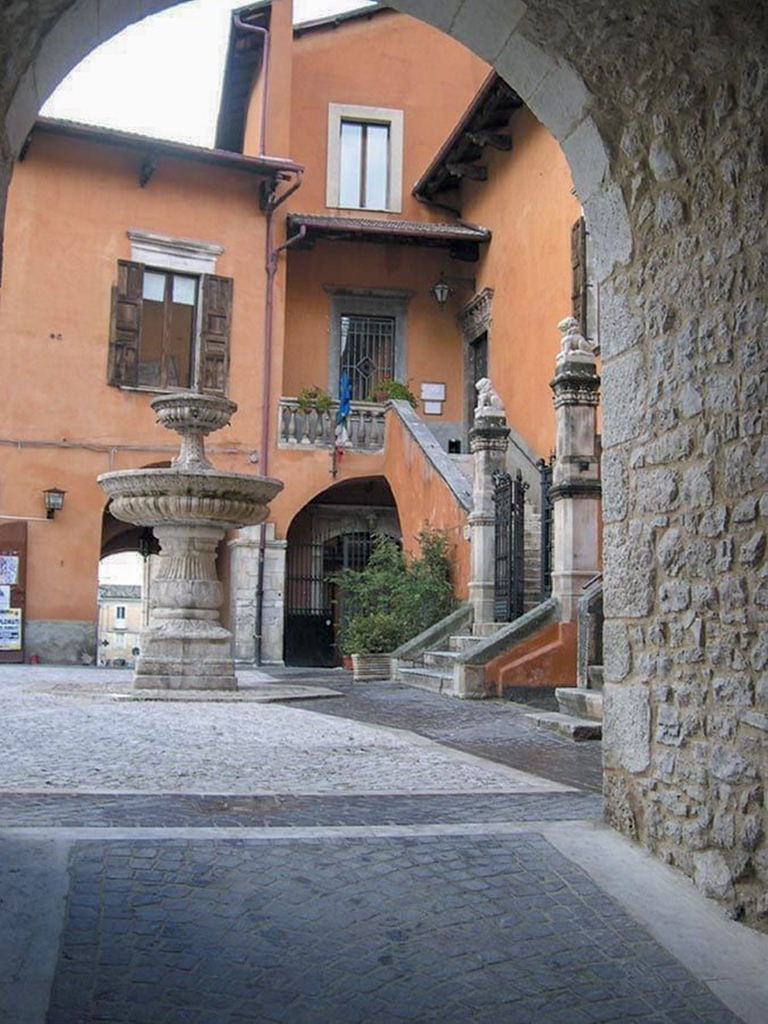
One of the historic fountains in Pettorano sul Gizio.
Credit: borghipiubelliditalia.itThe picturesque small town of Pettorano sul Gizio is located in the province of L’Aquila with the nearby Gizio river forming spectacular gorges amid the high green mountains. It has approximately 1,376 inhabitants, known as Pettoranesi.
The town is the birthplace of the famous professional wrestler known as Baron Michele Leone (1909-1988). He was one of the biggest stars of the early television era of wrestling. Known for his showmanship as well as his wrestling skills, Leone won the World Heavyweight Championship in 1950.
Pettorano rises along the southern boundary of the Peligna Valley along the road connecting Sulmona to the Cinque Miglia plateau, between the Gizio and Riaccio rivers. Thanks to the rivers, many mills and extra virgin olive oil plants arose, and the economy of the area also came to be based on coppersmithing, spinning, and weaving.
In medieval times, the name Pectoranum started to appear in documents. In Norman times, the castle of Pettorano was the seat of a large fiefdom occupying the whole Gizio Valley as far as Piano delle Cinque Miglia and the Sangro river, and it rose in importance thanks to its strategic position at the entrance of the Peligna Valley. From 1310 to the mid-18th century, the territory was under the rule of the important Cantelmo family, well-known in the history of southern Italy.
The 16th, 17th, and 18th centuries were periods of economic and cultural splendor, still visible in the many palaces built at the time, such as Palazzo Croce, Palazzo Gravina, the Castaldina, and Palazzo Vitto-Massei. Important lawyers, notaries, and doctors made Pettorano a privileged destination for the populations of the surrounding centers. In the 19th century, an important Abruzzese figure, notary Pietro De Stephanis, provided landmark studies in the history of the district and in 1865, while he was mayor, abolished the death penalty.
In the early 20th century, Pettorano was, after Sulmona and Pratola, the largest center in the Peligna Valley, with a population of over 5,000 inhabitants, almost five times the current number. Starting from the late 19th and early 20th centuries, perhaps the most important event was the massive immigration to South America and North America.
During the last Sunday in December, the town celebrates the Sagra della polenta rognosa. The typical dish of the charcoal makers (carbonari) of Pettorano was the polenta rognosa, which was white and seasoned with crushed sausages. The carbonari, who worked long hours in the cold, open air, used to consume this high-calorie dish almost daily. A museum is under construction commemorating the charcoal workers in the natural oasis of Monte Genzana – Alto Gizio. The project was begun in 2001 in the Cantelmo Castle.
In the year 2000, also in the Cantelmo Castle, the scuola di arte floreale” was inaugurated, a section of the prestigious Paris school. The branch in Pettorano is the second opened in Italy, the other one being in Rome. Courses on the floral arts are offered for both amateurs and professionals.
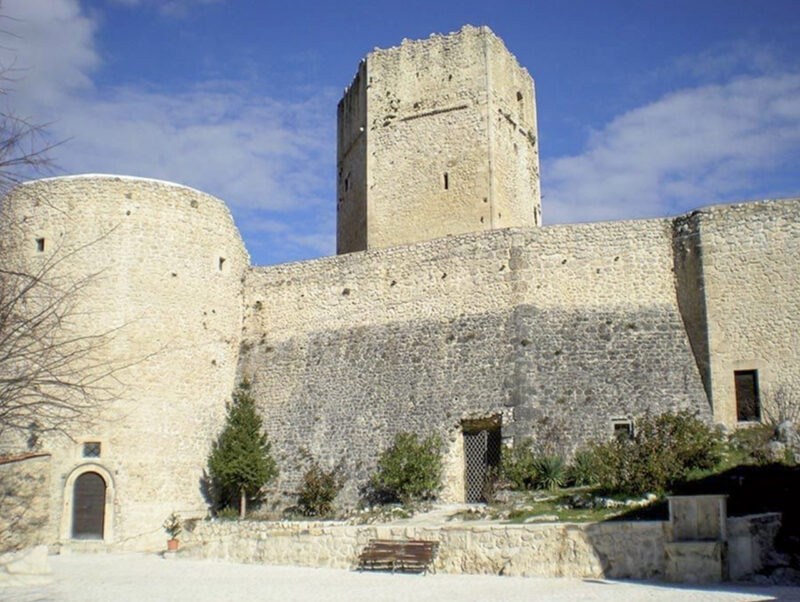
The medieval castle in Pettorano sul Gizio.
Credit: borghipiubelliditalia.itWhat to See
- The medieval castle, consisting of a pentagonal tower around which, in the 16th century, the fortified borough was built, with six doors that opened in the walls and two more circular towers. The castle gradually lost its original military function and became a commercial point.
- Palazzo Ducale, for centuries the seat of the Cantelmo family, now the seat of the town hall, with a stone fountain in the courtyard and, on the facade, an ancient sun clock
- Piazza Rosario Zannelli, with a fine 16th century fountain
- Church of San Dioniso, from the 18th century, with a beautiful monumental fountain featuring statues of Amphitrites and Neptune
- Riserva Naturale Regionale Monte Genzana e Alto Gizio, an important wildlife corridor between the Parco Nazionale d’Abruzzo and Parco Nazionale della Majella, which includes the urban center of Pettorano within the protected area.
Important Dates
- January 1 — Serenata di Capodanno, with music all over Pettorano
- Carnival — Testamento di Carnevale
- July 12-13 — Feast of Santa Margherita, the patron saint, and San Benigno
- July — Emigrants’ festival
- Last Sunday in December — Sagra della polenta rognosa
Italiano

Tradotto da Ennio Di Tullio
Provincia dell’Aquila, Regione Abruzzo
La pittoresca cittadina di Pettorano sul Gizio si trova in provincia dell’Aquila con il vicino fiume Gizio che forma spettacolari gole tra le alte montagne verdi. Conta circa 1.376 abitanti, detti Pettoranesi.
Il paese ha dato i natali al famoso lottatore professionista noto come Barone Michele Leone (1909-1988). Era una delle più grandi star della prima era televisiva del wrestling. Conosciuto per la sua spettacolarità e per le sue abilità nel wrestling, Leone vinse il World Heavyweight Championship nel 1950.
Pettorano sorge lungo il limite meridionale della Valle Peligna lungo la strada che collega Sulmona all’altopiano delle Cinque Miglia, tra i fiumi Gizio e Riaccio. Grazie ai fiumi, sorsero molti frantoi e impianti di produzione di olio extravergine di oliva e l’economia della zona si orientò anche sulla lavorazione del rame, la filatura, e la tessitura.
In epoca medievale, il nome Pectoranum cominciò a comparire nei documenti. In epoca normanna, il castello di Pettorano fu sede di un vasto feudo che occupava l’intera Valle del Gizio fino al Piano delle Cinque Miglia e al fiume Sangro, e assunse importanza grazie alla sua posizione strategica all’imbocco della Valle Peligna. Dal 1310 alla metà del XVIII secolo, il territorio fu sotto il dominio dell’importante famiglia dei Cantelmo, nota nella storia dell’Italia meridionale.
I secoli XVI, XVII e XVIII furono periodi di splendore economico e culturale, ancora visibili nei numerosi palazzi costruiti all’epoca, come Palazzo Croce, Palazzo Gravina, la Castaldina, e Palazzo Vitto-Massei. Importanti avvocati, notai, e medici fecero di Pettorano una meta privilegiata per le popolazioni dei centri circostanti. Nell’Ottocento, un importante personaggio abruzzese, il notaio Pietro De Stephanis, fornì studi fondamentali nella storia del rione e nel 1865, mentre era sindaco, abolì la pena di morte.
Agli inizi del XX secolo, Pettorano era, dopo Sulmona e Pratola, il centro più grande della Valle Peligna, con una popolazione di oltre 5.000 abitanti, quasi cinque volte quella attuale. A partire dalla fine del XIX e dall’inizio del XX secolo, forse l’evento più importante fu la massiccia immigrazione verso il Sud America e il Nord America.
Durante l’ultima domenica di dicembre, il paese festeggia la Sagra della polenta rognosa. Il piatto tipico dei carbonari di Pettorano era la polenta rognosa, bianca e condita con salsicce schiacciate. I carbonari che lavoravano per lunghe ore al freddo e all’aria aperta consumavano quasi quotidianamente questo piatto ipercalorico. Nell’oasi naturale di Monte Genzana – Alto Gizio è in costruzione un museo che ricorda i carbonai. Il progetto è stato avviato nel 2001 nel Castello Cantelmo.
Nel anno 2000, anche nel castello Cantelmo, è stata inaugurata la “scuola di arte floreale”, sezione della prestigiosa scuola parigina. La filiale di Pettorano è la seconda aperta in Italia, l’altra è quella di Roma. I corsi sulle arti floreali sono offerti sia per i dilettanti che per i professionisti.
Le attrazioni del luogo:
- Castello medioevale, costituito da una torre pentagonale attorno alla quale, nel XVI secolo, fu costruito il borgo fortificato, con sei porte che si aprivano nelle mura e due torri circolari. Il castello perse progressivamente la sua originaria funzione militare e divenne un punto commerciale.
- Palazzo Ducale, per secoli sede della famiglia Cantelmo, oggi sede del municipio, con una fontana in pietra nel cortile e, sulla facciata, un antico orologio solare
- Piazza Rosario Zannelli, con una bella fontana cinquecentesca
- Chiesa di San Dioniso, del XVIII secolo, con una bella fontana monumentale con statue di Anfitrite e Nettuno
- Riserva Naturale Regionale Monte Genzana e Alto Gizio, importante corridoio faunistico tra il Parco Nazionale d’Abruzzo e il Parco Nazionale della Majella, che comprende il centro urbano di Pettorano all’interno dell’area protetta.
Date da ricordare:
- 1 gennaio — Serenata di Capodanno, con musica in tutta Pettorano
- Carnevale — Testamento di Carnevale
- 12-13 luglio — Festa di Santa Margherita, la patrona, e di San Benigno
- Luglio — Festa degli emigranti
- Ultima domenica di dicembre — Sagra della polenta rognosa
Sources: https://en.wikipedia.org/wiki/Pettorano_sul_Gizio
https://www.italyheritage.com/regions/abruzzo/laquila/pettorano.htm
https://borghipiubelliditalia.it/borgo/pettorano-sul-gizio/March/April 2023

